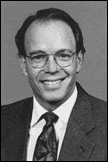 What did you learn at the AASP Annual
Meeting?
What did you learn at the AASP Annual
Meeting?
 With
170 speakers and 94 hours of content, there was something for
everyone at the AASP Annual Meeting in Indianapolis. If you figure
that the meeting costs $1500 (registration fee, room, board, and
travel) plus lost income of $1500, you need to leave with at least
$3000 in ideas and contacts for the meeting to be worthwhile.
I would suggest that 80% of the new ideas should be those that
you can put to use tomorrow, including:
With
170 speakers and 94 hours of content, there was something for
everyone at the AASP Annual Meeting in Indianapolis. If you figure
that the meeting costs $1500 (registration fee, room, board, and
travel) plus lost income of $1500, you need to leave with at least
$3000 in ideas and contacts for the meeting to be worthwhile.
I would suggest that 80% of the new ideas should be those that
you can put to use tomorrow, including:
- new approaches for diagnosis, treatment, and prevention;
- new analytic techniques for comparing intervention programs; and
- new strategies for feeding, pig flow, and people management.
In addition, you will want about 20% of the take-home messages to influence your long-term approach to serving your customers. This might include
- changes in how you manage your practice,
- where we are headed with biotechnology, and
- how to negotiate like a pro.
Without doubt, each of us was influenced by different presentations and discussions. For example, in his Howard Dunne address, Dr. David Reeves listed some of the public's concerns that we and our industry are being confronted with today. These include but are not limited to:
- impact of consolidation and integration on the traditional family farm (and on the practicing swine veterinarian),
- use of antibiotics and emergence of resistance,
- impact of pork production on the environment,
- managing the welfare of our pigs, and
- use of biotechnology in pork production, such as genetically altered feed.
David told us that these changing times are threatening but also create opportunity. We learned from Margaret Prahl that logic and science alone will not win the day. We must learn the powers of persuasion, how to manage our image, and how to work with our elected officials.
I took home an important message from the food safety workshop. Dr. Jim McKean told us that one of the important consequences of the so-called "Final Rule" is that the packing industry is responsible for identifying hazards that affect the safety of the pork product before, during, and after the slaughter process. I had heard this before but it had not hit me in such clear terms. I ship pigs to a packing plant that is responsible for how I produce pork. On the one hand this feels quite threatening. On the other hand, as quantifiable food safety outcomes are adopted, I believe there will be an exponential learning curve and that an improved product will be served on the consumers' dinner table. This will be an enormous opportunity for our industry and for swine practitioners who wish to become involved in food safety and process auditing. Stay tuned on this subject.
Porcine reproductive and respiratory syndrome virus (PRRSV) elimination is here. We have struggled with this virus for almost 15 years and that's long enough for some of our leaders. Steve Henry and Camille Moore have joined forces with researchers such as Scott Dee and Montse Torremorell and have concluded that it is time to develop methods to eliminate PRRSV from herds. Some of you will remember 20 years ago when our leaders decided that we needed to eradicate pseudorabies virus (Aujeszky's disease, PRV). We knew almost as little about PRV elimination methods then as we know today about PRRSV, but our leaders (Rod Johnson represented the AASP at that time) decided that we knew enough. As with any innovation, the early adopters will experience high risk and high return.
The final message with which I left the AASP Annual Meetings is that our profession has two critical issues that we must continue to address:
- The first is the welfare--particularly methods of euthanasia--of pigs under our care. It is of paramount importance that all of us examine this issue and have a training program in place at all farms to ensure personnel follow recommended practices (the pamphlet On Farm Euthanasia of Swine - Options for the Producer; is available from the NPPC or the AASP office).
- The second issue is antibiotic use and resistance. When you use antimicrobials, resistance will come. We have guidelines for judicious use of antibiotics (see the March-April 2000 issue of SHAP). These have been developed after countless weeks of study and discussion. They have been developed to allow us to care for our swine herds while protecting the public health. Are you and your clients following these guidelines?
So I got much more than my money's worth at the Annual Meeting. I feel invigorated, renewed, and excited about my new understanding. In terms of value for money, our Association is incredible...and this is on top of the social environment that we enjoy--sharing experiences and celebrating our successes. Congratulations to Drs. Gordon Spronk (AASP Swine Practitioner of the Year), Tom Burkgren (AASP Meritorious Service Award), and David Reeves (Howard Dunne Award)!
As always, there is an excellent proceedings book available with all the papers presented. Each member of the AASP receives a proceedings as a benefit of membership. Proceedings are also available for purchase for $60.00. Call Sue Schulteis at 515-465-5255 or email at aasv@aasv.org.
